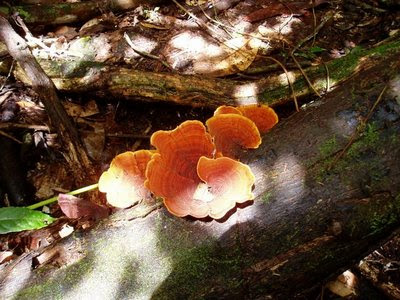
Gunung Gading NP has much more to show the the giant flowers. You can do many interesting jungle treks with different destinations. There are 5 trails you can walk. One of them leads to the summit of the Mt. Gunung Gading (965 m). On this trail you also pass an old english army camp from 1960. Another trail follows a chain of waterfalls. This opens nice possibilities for swimming. There are also some short walks around the headquarter and a long round trail.
Gunung Gading National Park is situated at Lundu District (a small town) is home to the world’s largest flower, the Rafflesia, a genus of parasitic flowering plants which can grow up to one meter in diameter. At Gunung Gading, entry at entrance fee of RM10 per head. We started our walk easy, relax and not in hurry for anything
Gunung Gading National Park is the marvelous giant 'flowers' Rafflesia. A little bit about how this plant got it's name.
According to it history, it was discovered in the Indonesian rain forest by an Indonesian guide working for Dr. Joseph Arnold in 1818, and named after Sir Thomas Stamford Raffles, the leader of the expedition.
Rafflesia, the plant has no stems, leaves or true roots. It is an endoparasite of vines in the genus Tetrastigma (Vitaceae), spreading its root-like haustoria inside the tissue of the vine.
There are many animals (mammals, birds, insects and reptiles) to watch. Here you can see several species of giant fig trees too and find a lot of interesting seeds and jungle fruits on the ground of the path. It´s worth to stay there at least 1 night and to do 2 daytrips.
If you have no fear of the dark just do a nightwalk in the Nationalpark around the headquarter. If there is no full moon you will be suprised how many animals you can observe at night after 10 pm. Better bring another spare torchlight for safety reasons and enough batteries. In the evening you can listen to and record the amazing sound of the rain forest - this is the right spot for that.
There are clean facilities to stay for low rates directly in the park. There are no cooking facilities. It´s reccommended to make a reservation at the Kuching tourist information near the waterfront (possible by phone also) if you want to stay overnight.
























 Gunung Gading NP has much more to show the the giant flowers. You can do many interesting jungle treks with different destinations. There are 5 trails you can walk. One of them leads to the summit of the Mt. Gunung Gading (965 m). On this trail you also pass an old english army camp from 1960. Another trail follows a chain of waterfalls. This opens nice possibilities for swimming. There are also some short walks around the headquarter and a long round trail.
Gunung Gading NP has much more to show the the giant flowers. You can do many interesting jungle treks with different destinations. There are 5 trails you can walk. One of them leads to the summit of the Mt. Gunung Gading (965 m). On this trail you also pass an old english army camp from 1960. Another trail follows a chain of waterfalls. This opens nice possibilities for swimming. There are also some short walks around the headquarter and a long round trail.























